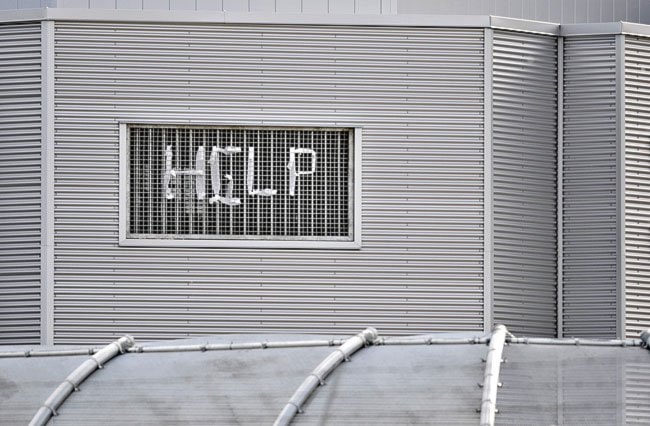International experts are in agreement that prolonged spells of solitary confinement are just as psychologically harmful to prisoners as other, more grisly types of torture.
Yukon’s tough-on-crime crowd, meanwhile, are equally certain that it’s no big deal that Whitehorse Correctional Centre locks away inmates in solitary for months on end. Nor are they the least bit concerned by at least three human rights complaints that have been filed against the jail.
Let’s follow this thinking through to its natural conclusion. If it’s acceptable to torture inmates, why not go whole hog?
The jail should be equipped with a waterboarding facility, to start. If it’s good enough for the CIA to scare prisoners witless with simulated drownings, it should be good enough for us.
And why stop there? Disobedient inmates could have their fingernails ripped out. They could be electrocuted with car batteries. There are hundreds of imaginative ways to express the disgusting, sadistic pleasures of residents who apparently think this sort of thing is appropriate in Canadian society today. So let’s get on with it and do it right.
Otherwise, maybe it’s time for Yukoners to agree that torturing inmates is inhumane and degrading to all involved. It’s also probably unlawful, as a form of cruel and unusual punishment. And, on a practical level, there is good reason to worry that prolonged use of solitary confinement actually makes the Yukon a more dangerous place for us to live.
Remember, almost every inmate will eventually be released one day. Would you rather give them opportunities to become more mentally stable while in prison, or would you use the one method that is assured to cause already-dangerous people to become even more deranged before their release?
Shamefully, the answer that Justice Minister Mike Nixon has given is the latter. What’s more, his department is fighting to ensure that any details of unsavoury activities within the jail don’t see the light of day.
Updated figures on solitary confinement would surely be higher than the latest numbers, released in May, which show an inmate staying in solitary for nearly four consecutive months. It’s entirely possible that one well-known inmate, Michael Nehass, will have spent all of 2014 in segregation. He and his family maintain he has been holed up by himself for much longer than that.
So why won’t the Justice Department disclose the same figures it saw fit to release earlier in the year? Or even offer an explanation why? The answers seem obvious. Its practice of putting inmates in solitary for long periods is simply inexcusable, and officials realize as much.
It’s counter-intuitive that locking away someone in a box for an extended period would be as dangerous to the inmate’s mind as physical forms of torture. Indeed, as Patrick White recalls in an excellent recent report in the Globe and Mail, solitary confinement was invented in the 19th century by Quakers and Anglicans who hoped it would bring inmates closer to God. The word penitentiary has its roots in the word for repentance.
They were horrified to discover that solitary confinement instead caused prisoners’ minds to unravel. Today, researchers have established that extended use of solitary confinement induces anxiety, depression, paranoia, psychosis, even hallucinations. This psychological stress is considered as clinically distressing as physical torture, and its impact can be permanent. That’s why the United Nations has called for solitary confinement to be banned, except in limited, short-term cases, no longer than 15 days.
Jail guards have tough, thankless jobs, and we don’t doubt many workers at Whitehorse Correctional Centre are simply doing the best they can in difficult circumstances. But the jail’s abuse of solitary confinement just goes to show that justice officials are in way over their heads when it comes to the treatment of inmates with serious mental illnesses.
In the case of Nehass, friends and family have watched his behaviour grow increasingly erratic as he languishes in solitary. He espouses strange conspiracy theories. He looks dangerously thin. Does anyone actually believe this treatment is helping prepare him for release into society?
Clearly, a vicious cycle is at work: solitary confinement fuels a mentally ill patient’s delusions, causing more acting out, which leads to yet more solitary confinement.
At the heart of the problem is the Justice Department’s delusional claim that the jail is equipped to double as a psychiatric facility. It clearly isn’t. A Health Department report prepared in March states that psychiatric care for high-risk inmates is limited to just two hours a week.
Back in 2008, a lawsuit launched by a mentally ill inmate threatened to jeopardize the territory’s flimsy claim that the jail is able to adequately serve as a psychiatric hospital. In response, the Yukon government suggested that it would, among other things, build a psychiatric ward at the hospital that could be used by mentally ill inmates.
However, today the hospital maintains its psychiatric ward was never intended for inmates long term. Notch that as just one more promise broken by the Yukon Party.
It’s easy to imagine why our government doesn’t take this issue seriously, given the low regard that many voters hold for inmates. It’s much more popular to tout how you’re helping victims of crime. What’s often missed is that, with the Yukon’s dangerous misuse of solitary confinement, our government is quite likely creating future victims, by ensuring that mentally unstable inmates leave the jail even more deranged than they arrived. This needs to stop.
